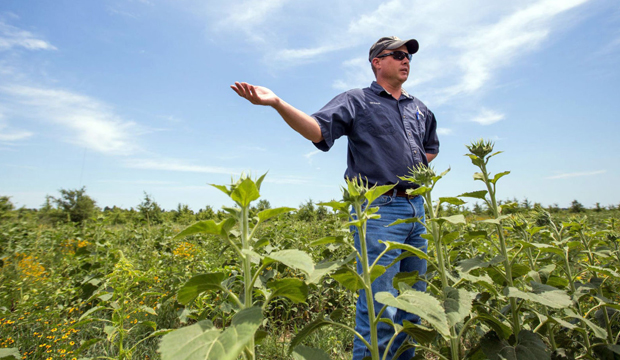Attracting wildlife to the farm can be both fun and profitable. Check it out – what Missouri farmers are doing to enhance their wildlife hospitality.
JEFFERSON CITY • In Missouri, a number of farmers have turned to food plots to help create a supplemental food source for wildlife, to help attract animals to their property and to help their populations grow for the purpose of aesthetics, recreational hunting and beyond.
Tim Kavan, a private land conservationist for the Missouri Department of Conservation, says food plots can be useful to help feed wildlife groups in critical need.
“It’s a food source, a source of nutrition during stressful times of the season,” he says. “Whether it’s deer, turkey, quail or dove, they’re there for the food component, for the nutrition.”
He added there are further benefits beyond nutrition for local wildlife.
“Some of the benefits are just the manipulation of the soil, disturbing it, getting annual weeds to grow, whether it’s pigweed or we’ve got coreopsis, just those annual weeds,” Kavan says. “Over time, it will mature and turn into grass and then unwanted trees, so just having the disturbance and the management on the field is an added bonus.”
Also, the landowner can begin a rotation where food plots are tended to every other year, so they can grow as a wild habitat for turkeys, rabbits, quail and other animals.
“It’s a form of management to disturb the ground and get some new growth instead of it all maturing at the same time; it offers different stages of habitat,” Kavan says.
At a farm in Matthews, Mo., Kavan pointed out the production of sunflowers to help attract doves. He says once a thrasher runs through the field, the ground-level seeds will create a food source for doves, which have weak beaks and feet unable to crack into seeds like other birds. Also, it creates a sort of sheltered living area for various types of birds.
“It provides shade and dusting areas,” Kavan says. “All of our bird species, they take baths in dust. They don’t go to water to take baths, so they’ll come out here and dust and get all the insects and parasites off of them that way.”
The draw for farmers to create food plots on their land, Kavan says, could be for personal enjoyment, including activities like aesthetic wildlife viewing, hunting, a sense of involvement on their land and being able to manipulate the land to provide those animals nutrition at different times throughout the year.
For Ed Graves, a farmer south of Biehle, Mo., his food plots on a 20-acre land area set aside for the Conservation Reserve Program are used to help build an annual quail population to assist in field trialing Brittany hunting dogs.
The CRP is a cost-share and rental program led by the U.S. Department of Agriculture and administered by the USDA Farm Service Agency. In exchange for government money, farmers can develop food plots on their land to help improve environmental quality, conserve the wildlife and build up natural populations throughout the state.
Kavan says the Missouri Department of Conservation also offers cost-share money for farmers to create food plots in pivot corners on farms, in timber openings and in opportunistic areas like near power lines and logging roads.
Logan Young, August 7, 2016, St. Louis Post Dispatch
Photo Credit: (Glenn Landberg/The Southeast Missourian via AP)

